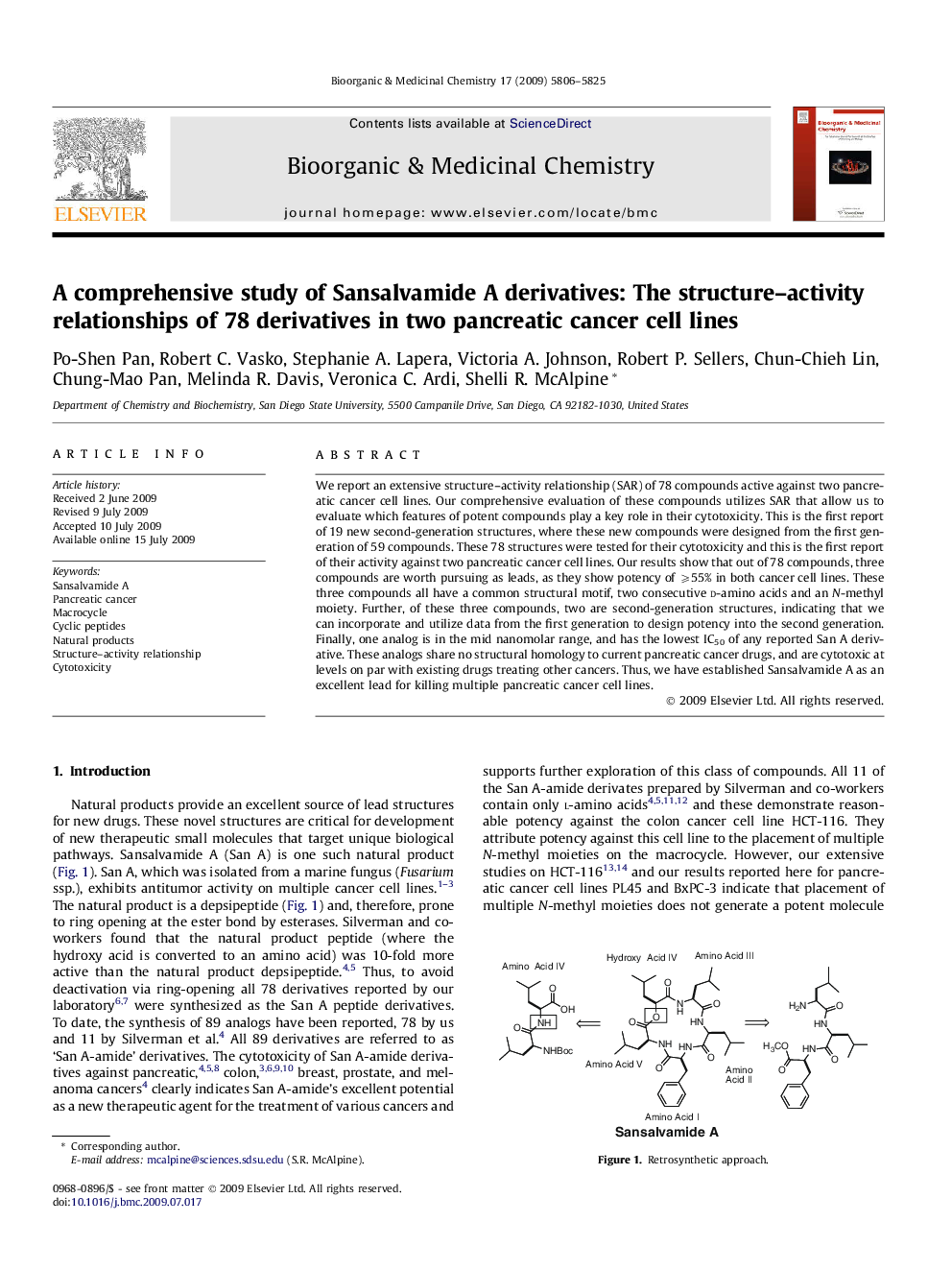| کد مقاله | کد نشریه | سال انتشار | مقاله انگلیسی | نسخه تمام متن |
|---|---|---|---|---|
| 1363135 | 981504 | 2009 | 20 صفحه PDF | دانلود رایگان |

We report an extensive structure–activity relationship (SAR) of 78 compounds active against two pancreatic cancer cell lines. Our comprehensive evaluation of these compounds utilizes SAR that allow us to evaluate which features of potent compounds play a key role in their cytotoxicity. This is the first report of 19 new second-generation structures, where these new compounds were designed from the first generation of 59 compounds. These 78 structures were tested for their cytotoxicity and this is the first report of their activity against two pancreatic cancer cell lines. Our results show that out of 78 compounds, three compounds are worth pursuing as leads, as they show potency of ⩾55% in both cancer cell lines. These three compounds all have a common structural motif, two consecutive d-amino acids and an N-methyl moiety. Further, of these three compounds, two are second-generation structures, indicating that we can incorporate and utilize data from the first generation to design potency into the second generation. Finally, one analog is in the mid nanomolar range, and has the lowest IC50 of any reported San A derivative. These analogs share no structural homology to current pancreatic cancer drugs, and are cytotoxic at levels on par with existing drugs treating other cancers. Thus, we have established Sansalvamide A as an excellent lead for killing multiple pancreatic cancer cell lines.
We report an extensive structure–activity relationship (SAR) of 78 compounds active against two pancreatic cancer cell lines. Our comprehensive evaluation of these compounds utilizes SAR that allow us to evaluate which features of potent compounds play a key role in their cytotoxicity. This is the first report of 19 new second-generation structures, where these new compounds were designed from the first generation of 59 compounds. These 78 structures were tested for their cytotoxicity and this is the first report of their activity against two pancreatic cancer cell lines. Our results show that out of 78 compounds, three compounds are worth pursuing as leads, as they show potency of ⩾55% in both cancer cell lines. These three compounds all have a common structural motif, two consecutive d-amino acids and an N-methyl moiety. Further, of these three compounds, two are second-generation structures, indicating that we can incorporate and utilize data from the first generation to design potency into the second generation. Finally, one analog is in the mid nanomolar range, and has the lowest IC50 of any reported San A derivative. These analogs share no structural homology to current pancreatic cancer drugs, are cytotoxic at levels on par with existing drugs treating other cancers. Thus, we have established Sansalvamide A as an excellent lead for killing multiple pancreatic cancer cell lines.Figure optionsDownload as PowerPoint slide
Journal: Bioorganic & Medicinal Chemistry - Volume 17, Issue 16, 15 August 2009, Pages 5806–5825